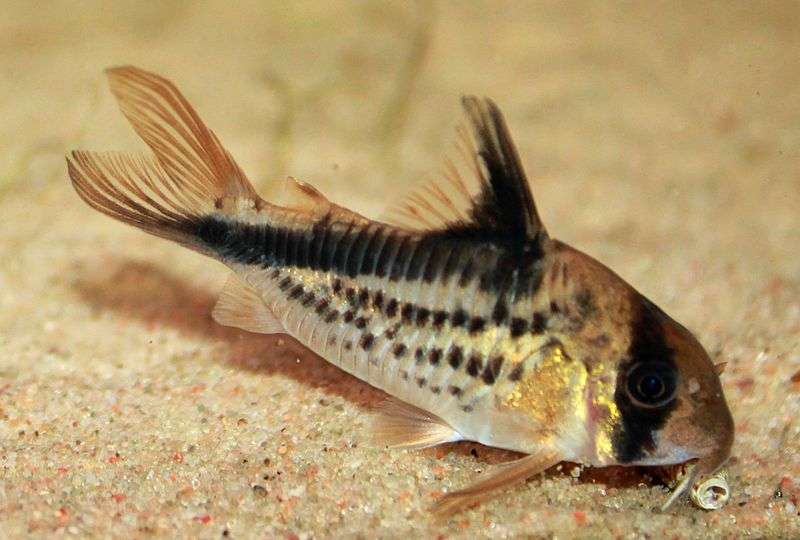
Size
The greatest size of this fish is 1.9 inches (4.9 centimeters).
Physical Characteristics and Behavior
The form of Corydoras loxozonus is comparable to that of other Corydoras species. They have a protruding dorsal and pectoral fin, as well as a tilted lower jaw. The dorsal fin’s first set of rays are black, and the hue extends obliquely down the flank and into the stipe. A black ring that extends past the eyes circles the skull from crown to crown. The ground is a light brownish gray color in a similar vein. The armor’s plates are accented with tiny black dots. These fish adopt a defense technique used by all Corydoras species to avoid being swallowed whole: they lock the tips of their pectoral fins together. Consequently, they will probably fall into your net when you attempt to catch them. The tips of the pectoral fins are also quite acute.
Care and Keeping as Pet

- Water Conditions
It enjoys a tropical environment with water that is between 21 and 24 degrees Celsius, 6.0 to 8.0 pH, and 2 to 25 dGH hardness. Worms, benthic crustaceans, insects, and plant matter make up its diet.
- Tank mates
Very calm neighbourhood fish. They won’t purposely bother the fish in the aquarium, but their fumbling around the tank could annoy more delicate fish or other bottom dwellers. It’s better to keep them in groups of 5 or more.
- Tank Setup
Enjoys a planted tank and needs a substrate of sand or tiny pebbles. When a cory’s barbels become damaged from being kept on sharp or big stones, it will be difficult for it to find food.
As with other scaleless fish, corys are sensitive to salt, therefore introducing salt to the aquarium will hurt them.
- Diet
These fish will consume most food that sinks to the bottom of the tank. Flake food or other sinking meals, such as catfish pellets, should be added to sinking algae pellets as a supplement.
You should be aware that these fish have a carnivorous side and enjoy eating things like bloodworm and brine shrimp. Foods made of vegetables don’t provide much nutrients for them. Injured, dead, or even dying fish that remain on the substrate for an extended period of time will also be eaten. They are quite opportunistic! Since these fish are most active at night, one feeding just before darkness falls is usually plenty. Nevertheless, it is simple to get them to eat during the day. Due to their sluggish eating habits, they should be given at least 30 minutes to finish their meal.
- Handling
To relocate Corydoras loxozonus, which has pectoral spines that have hardened and can penetrate human skin, one should use a plastic container rather than a net because the spines could become tangled in the mesh. Since these fish have no scales, adding salt to the aquarium will harm them because they are so sensitive to it.
Table





